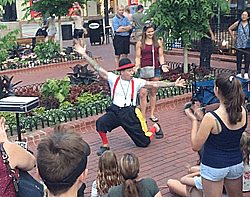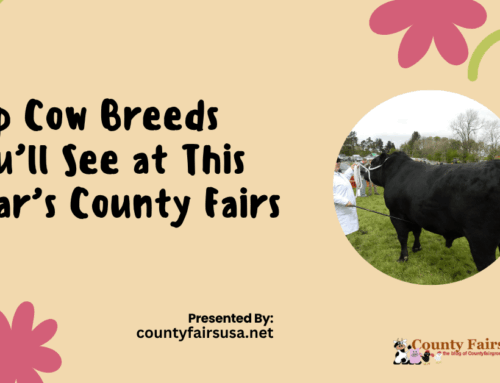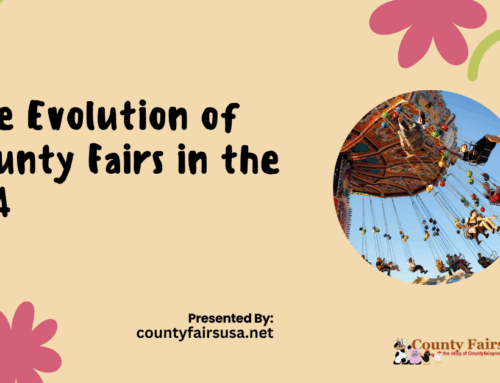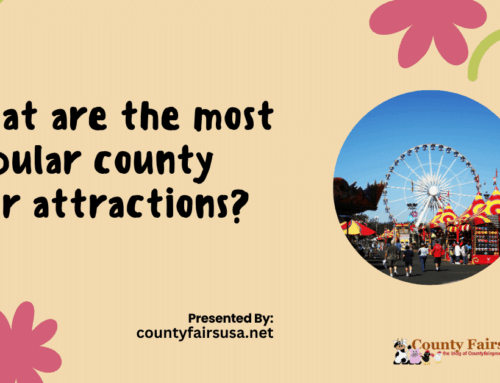Every year, communities come together to celebrate heritage, craftsmanship, and tradition. These gatherings showcase local artistry, agriculture, music, and food, keeping cultural roots alive.
How Do County Fairs Celebrate Local Culture and Traditions?
While modern attractions add new elements, the heart of these events remains unchanged—preserving traditions for future generations. Through competitions, exhibits, and shared experiences, they continue to connect people with their history and community.
A Rich Historical Legacy
County fairs trace their origins back to the early 19th century when they primarily served as agricultural gatherings. Farmers and traders would come together to share knowledge, exhibit livestock, and exchange goods. Over time, these fairs evolved to include entertainment, competitions, and cultural showcases, making them a staple of local life.
Despite modern influences, the essence of these fairs remains unchanged. Many still feature time-honored events such as livestock judging, quilting contests, and pie-baking competitions. These activities not only honor the past but also encourage younger generations to appreciate and participate in their region’s cultural heritage.
Some of the most well-known county fairs, such as the Iowa State Fair and the Los Angeles County Fair, have been running for more than a century. Their long-standing presence is a testament to their role in preserving traditions and creating a sense of belonging for attendees.
Celebrating Agriculture and Farming Traditions
Agriculture has always been at the heart of county fairs. These events continue to highlight the importance of farming through various exhibits and competitions.
- Livestock Shows – Farmers bring their best cattle, sheep, and poultry to be judged, showcasing breeding techniques and animal care expertise.
- Crop Competitions – Displays of prize-winning pumpkins, tomatoes, and corn reflect local farming practices and the agricultural strengths of the region.
- 4-H and FFA Programs – Youth agricultural programs encourage the next generation to take an interest in farming, teaching them valuable skills and responsibility.
By keeping these traditions alive, county fairs play a crucial role in educating the public about the significance of farming while providing a platform for local growers to connect with their communities.
Showcasing Local Art, Crafts, and Handiwork
Handmade crafts and traditional artistry hold a special place at county fairs. Skilled artisans use these events to display and sell their creations, keeping time-honored techniques alive.
- Quilting Exhibits – Many fairs feature stunning quilts, each telling a story through intricate patterns and careful stitching.
- Woodworking and Metalwork – Blacksmiths, carpenters, and metal artists demonstrate their craft, often using methods passed down through generations.
- Handmade Jewelry and Pottery – Local craftspeople bring unique, handcrafted items that celebrate regional artistry.
These displays not only support local artists but also ensure that traditional crafting methods are not lost in an era of mass production.
Traditional Music, Dance, and Entertainment
Music and dance are central to the cultural experience at county fairs. These performances provide a platform for both established and up-and-coming local artists to share their talents.
- Folk and Bluegrass Bands – Many fairs feature live performances by musicians who play traditional songs that have been passed down for generations.
- Square Dancing and Line Dancing – These lively dance forms bring people together, reinforcing a sense of community and connection.
- Storytelling Sessions – Some fairs include storytellers who share legends, folklore, and historical anecdotes, preserving oral traditions.
These performances allow attendees to experience the cultural roots of their region while enjoying a lively and engaging atmosphere.
Preserving Culinary Heritage Through Food Stalls
Food is one of the most memorable aspects of any county fair. The variety of dishes available reflects local flavors and cooking traditions. Many foods served at these fairs have deep cultural roots, ensuring that classic recipes continue to be enjoyed by future generations.
Classic Fair Foods That Represent Local Cuisine
- Deep-Fried Specialties – From deep-fried Oreos to fried pickles, these treats are a nod to Southern and Midwestern comfort food traditions.
- Barbecue and Smoked Meats – Regional barbecue styles, whether Texas-style brisket or Carolina pulled pork, are proudly served at county fairs.
- Homemade Pies and Preserves – Traditional fruit pies, jams, and jellies highlight seasonal produce and time-honored baking methods.
Additionally, food competitions such as chili cook-offs and pie-eating contests bring communities together while celebrating the culinary expertise of local residents.
Strengthening Community Bonds and Generational Learning
County fairs are more than just entertainment—they are a space for families and neighbors to connect. These events foster a sense of belonging and ensure that cultural traditions are passed down through generations.
Ways County Fairs Encourage Generational Learning
- Workshops and Demonstrations – Many fairs offer hands-on experiences in traditional skills such as butter churning, candle making, and beekeeping.
- Mentorship Opportunities – Older generations share their expertise with younger attendees, ensuring that cultural knowledge continues to be passed down.
- Family Competitions – Events like sack races, baking contests, and craft exhibits encourage participation from all age groups.
These interactions create lasting memories and reinforce the importance of community traditions.
Evolving with Modern Times While Retaining Tradition
While county fairs remain deeply rooted in tradition, they have also adapted to the changing times. The introduction of modern attractions, such as amusement rides and digital ticketing, has made fairs more accessible and appealing to younger audiences. However, these updates do not replace the cultural elements that make fairs unique.
How County Fairs Balance Tradition and Innovation
- Heritage Villages – Some fairs include reenactments of historical events or traditional farmsteads to educate visitors about the past.
- Eco-Friendly Initiatives – Efforts such as recycling programs and sustainable food sourcing help fairs reduce their environmental impact while preserving local agriculture.
- Virtual Components – Livestreamed performances and online craft sales allow broader participation while keeping cultural traditions alive.
By blending the old with the new, county fairs continue to be relevant and engaging while staying true to their roots.
Conclusion
County fairs are a celebration of history, tradition, and community. They serve as a living museum where agriculture, craftsmanship, music, and food come together to tell the story of a region’s cultural identity. As these fairs evolve, they remain committed to preserving the past while embracing the future, ensuring that local traditions are never forgotten.
Attending a county fair is more than just a fun outing—it’s an opportunity to connect with heritage, support local talent, and be part of something that has stood the test of time. Whether it’s through a blue-ribbon pie contest, a live folk band, or a showcase of handmade quilts, these fairs continue to honor and celebrate the traditions that make each community unique.







Leave A Comment